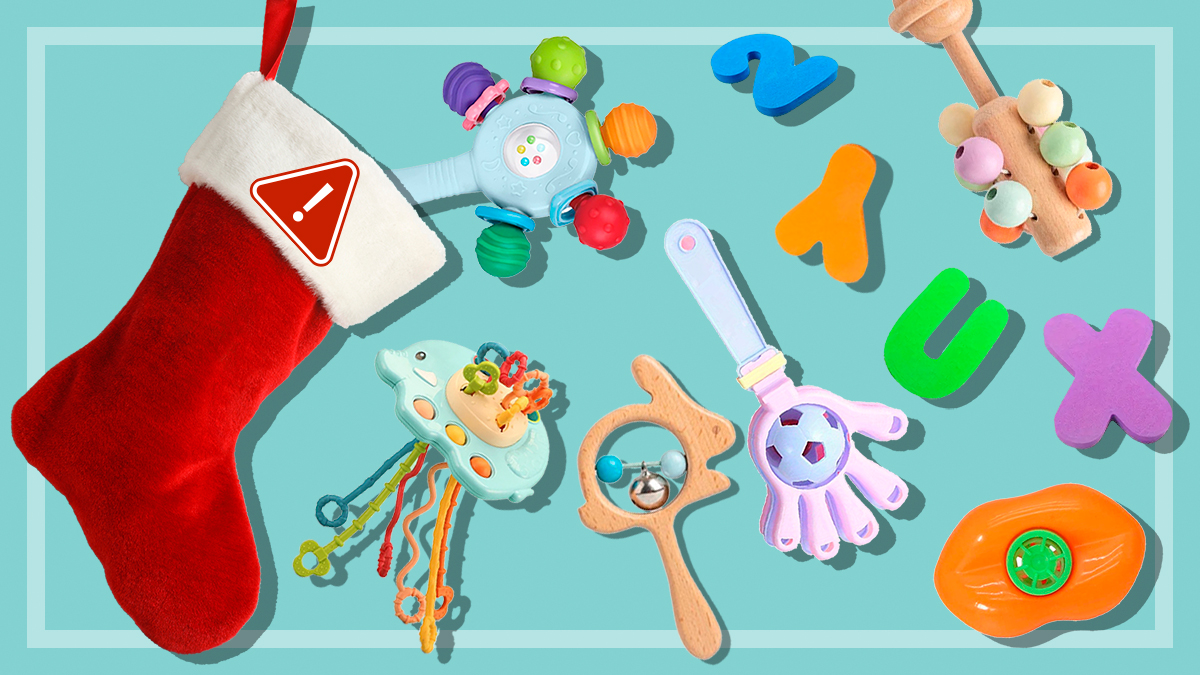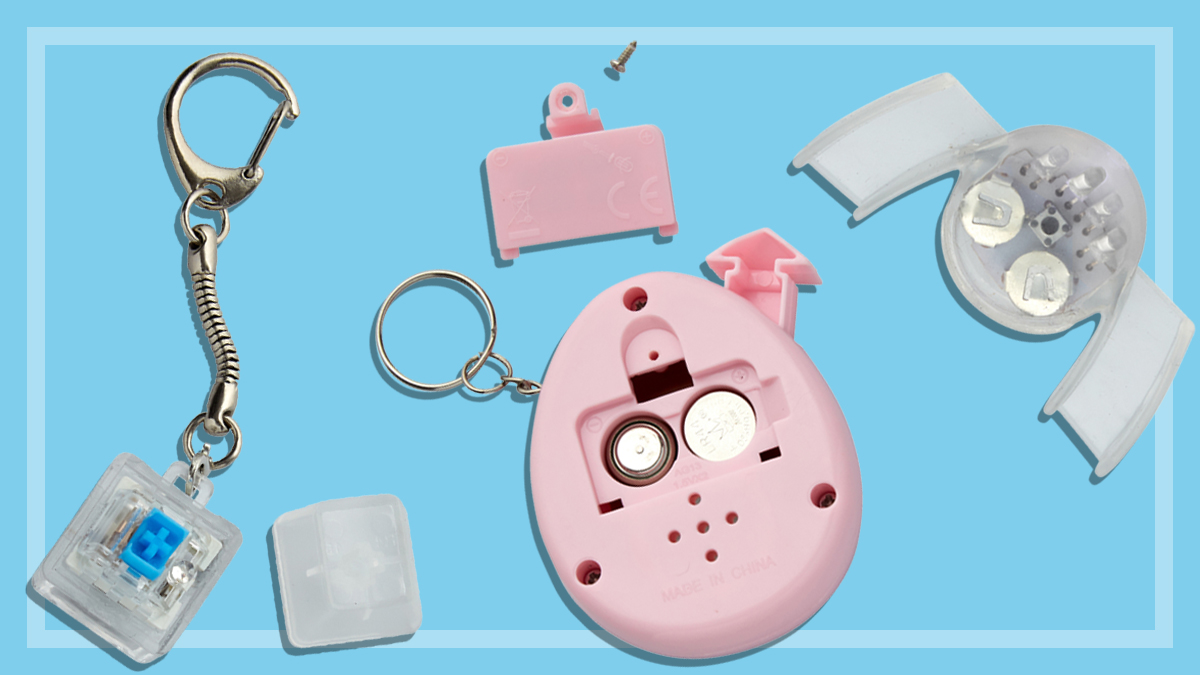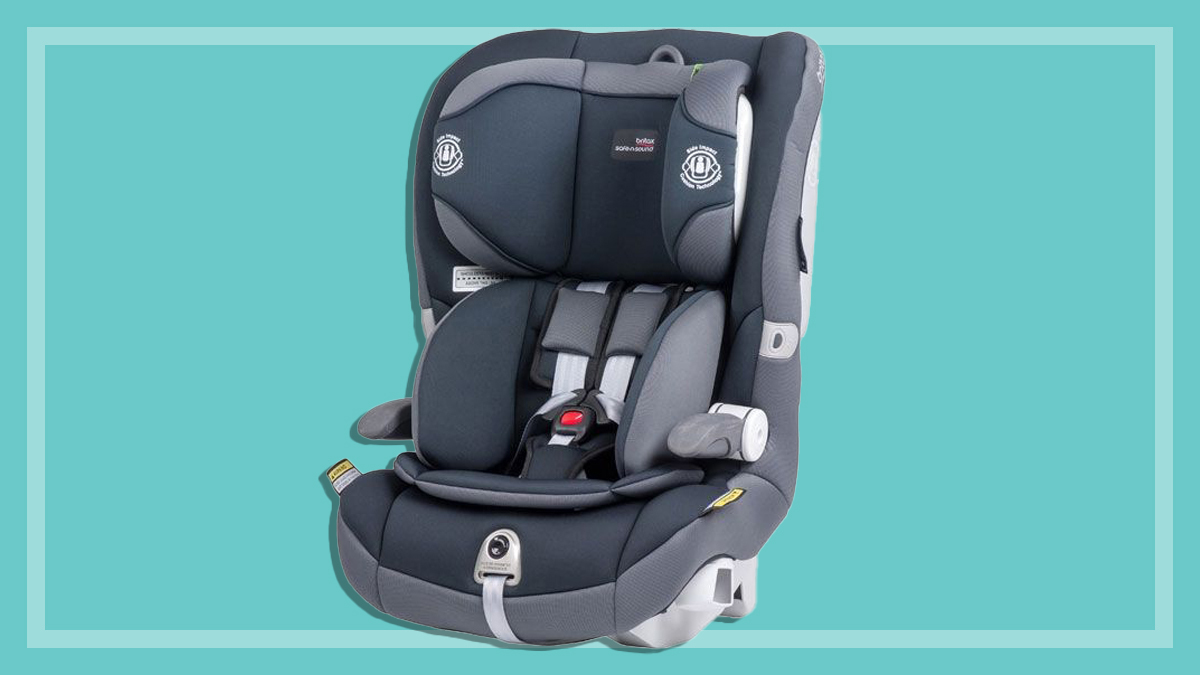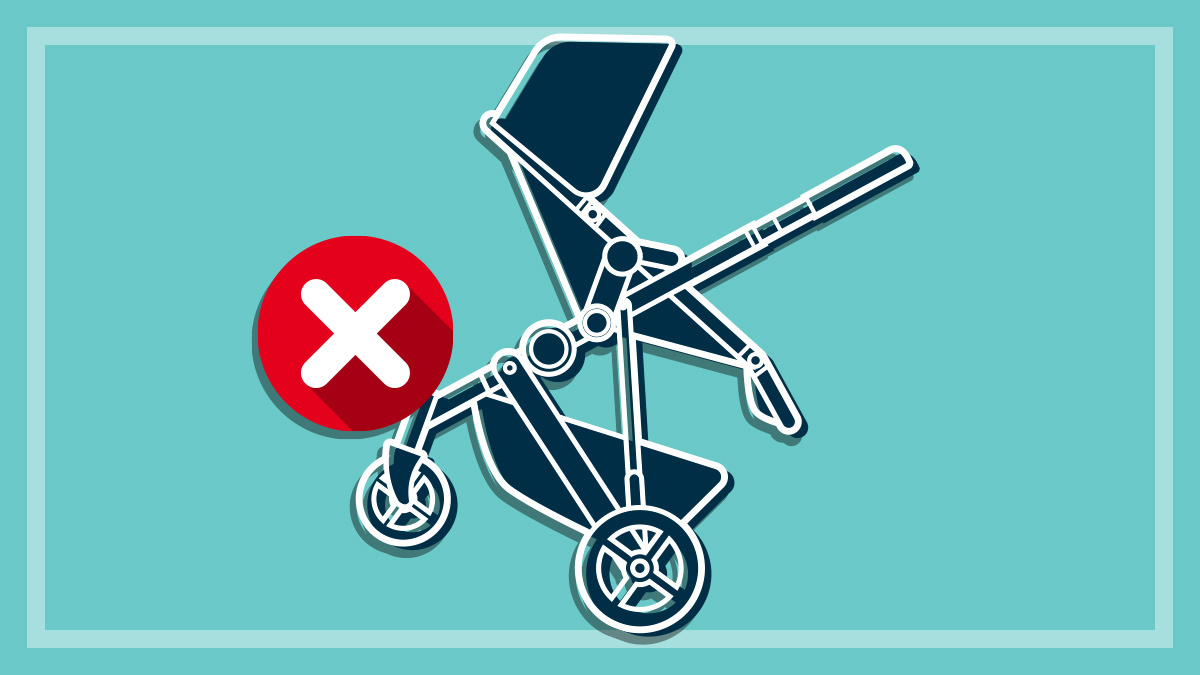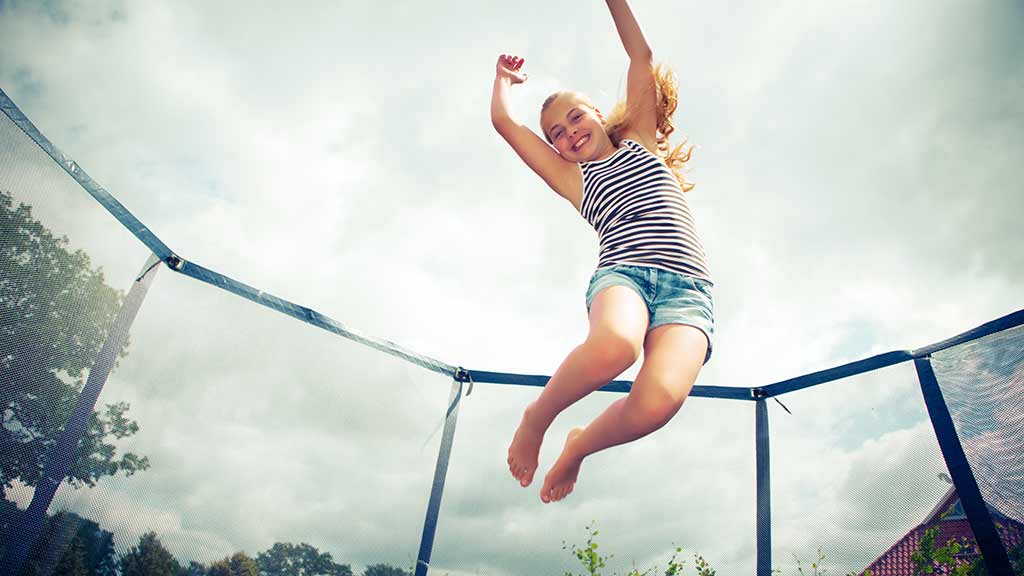Get our independent lab tests, expert reviews and honest advice.
How to be more eco-friendly when using nappies
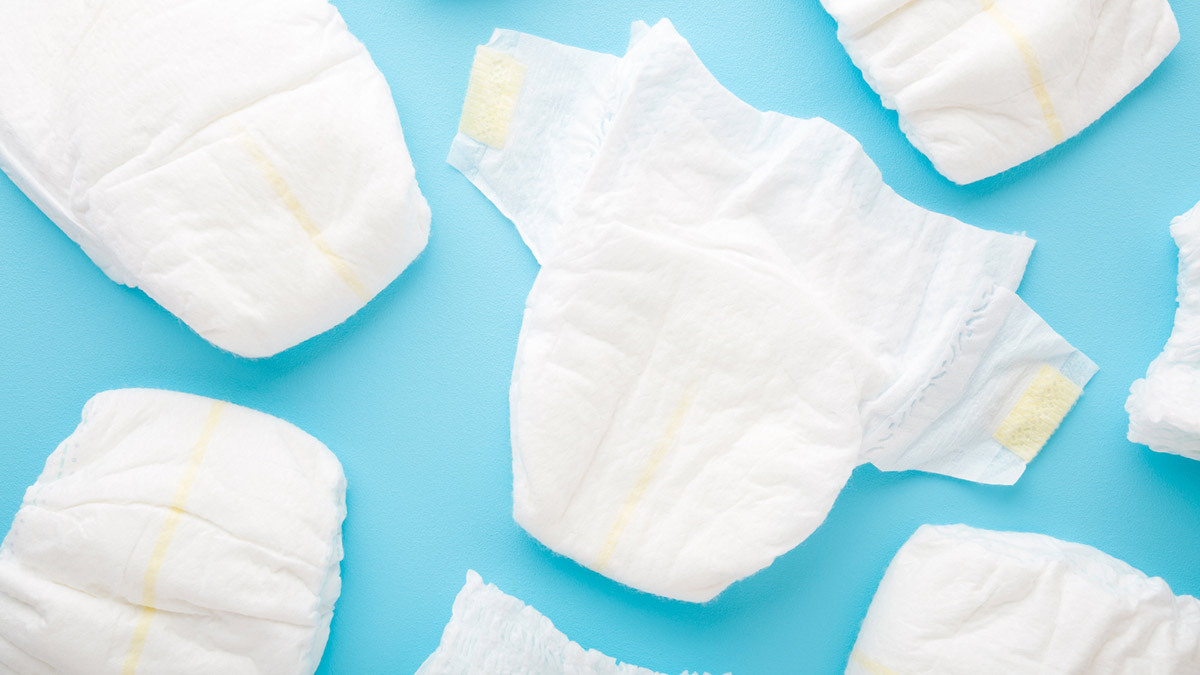
There’s no getting around it: disposable nappies take a toll on the environment. Because they contain plastic (which is essential for keeping leaks in), they don’t tend to biodegrade in landfill, so they can take up to 150 years to break down.
On this page:
- OPTION 1. Modern cloth nappies (MCNs)
- OPTION 2: Using 'eco' disposable nappies
- OPTION 3: The hybrid model: Modern cloth nappies (MCNs) and disposables
- The top-performing nappies with eco claims
Even ‘biodegradable’ disposable nappies take many years to break down in landfill.
Even ‘biodegradable’ disposable nappies take many years to break down in landfill
If you have a child in nappies and you’d like to reduce your reliance on regular disposable nappies, you have three options:
- Use modern cloth nappies (MCN)
- Use disposable nappies with ‘eco-friendly’ claims
- Use a mixture of both.
As a parent who used a combination of MCNs and disposable nappies, I’ll share my experiences to give you some ideas to reduce your environmental impact. I don’t claim to be an expert on the topic – just a regular parent who’s been in the trenches and found a way to use cloth nappies part-time for my child.
(My daughter is now eight, so I survived and made it out the other side – you will too!)
OPTION 1. Modern cloth nappies (MCNs)
“The best way to significantly reduce your environmental impact when it comes to nappies is to opt for modern cloth nappies,” says Rebecca Ciaramidaro, CHOICE’s expert on babies’ and kids’ products.
“While they lack the convenience of disposable nappies, they’ve come a long way from the simple terry towelling squares of the past, so let go of any thoughts of baggy, leaky terry-cloth nappies and huge tubs of laundry soaking in Napisan.
“They’re also far more simple to use than old-school nappies, and they have absorbent padding and liners, water-resistant covers and leak-proof elasticised leg holes so they’re more reliable.”
And MCNs are hitting the mainstream, with more and more retailers than ever before stocking them. They come in all shapes, colours and styles – not to mention price points, with even discount retailers like Aldi and Kmart are jumping on the MCN bandwagon.
You might be put off by the upfront cost of MCNs, but they can work out cheaper than disposables over time since you only pay for them once. And if you have a second child (or more), the cost per wear becomes even lower.
The best way to significantly reduce your environmental impact when it comes to nappies is to opt for modern cloth nappies
Rebecca Ciaramidaro, CHOICE babies and kids expert
There’s also quite the trade in secondhand nappies online. (Don’t worry – you can sanitise them before use!). This is a good way to try out a range of MCN brands and styles to find what works for you and your baby without spending lots of money, especially if you’re not completely sure you’ll be able to commit to them. And since some people only use MCNs briefly before switching to full-time disposables, you can often pick up nappies that have only been minimally (or even never) used.
If you’re not sure you want to commit to MCNs, a nappy library is another good place to start. You can hire a range of nappies from a nappy retailer for a test run, which gives you the opportunity to learn how to use them and decide if you want to continue.
At the end of the hire period, you can either return them all to the retailer, keep the ones you like, or use the hire fee as a credit for the retailer’s store. (This may differ depending on the service you use.)
MCN laundry services also exist, which can ease the laundry burden in those first intense weeks of bringing your baby home. This can give you a bit of a breather until you find your rhythm using MCNs. (I didn’t use one of these, so can’t comment on how well they work.)
I opted to use a nappy library while my daughter was a newborn as regular-sized nappies tend to be too big for tiny babies. It was a good opportunity to try them out early on without having to spend money on newborn size MCNs.
Plus it gave me a chance to decide which styles and brands worked best for my baby before buying, and most importantly, to see if I could manage the work of using cloth nappies.
The hire company provided detailed information about using MCNs, plus online support for any questions I had. The money I’d spent on the nappy hire converted to store credit – money well spent, I think!
I cobbled together a collection of MCNs from brand-new and second-hand purchases, plus some hand-me-downs from my cousin, which brought the cost down considerably.
This might be TMI, but exclusively breastfed babies have water-soluble poo, so technically you can just throw the nappy and its contents straight into the washing machine. If the thought grosses you out, you can always give them a quick rinse in the laundry sink before putting them in the washing machine. (And obviously don’t wash nappies with other clothes.)
Surprisingly, newborn poop doesn’t smell much (especially for breastfed babies), so things didn’t get anywhere near as stinky as I’d thought they might. And MCNs generally don’t need soaking; most people use the ‘dry pailing’ method, which means you just pop the nappy into a bucket with a lid – no need to add anything else.
Once your child starts eating solids (or if you’re using formula), things become well, more solid in your child’s nappy. At that point I started using nappy liners – they’re just an extra layer that goes inside the nappy that lets urine pass through but catches the solids. You can then drop the poop in the toilet and flush it away, meaning you don’t need to clean poo off the nappy itself. It makes life easier and helps prevent staining.
They’re relatively inexpensive, and some people even make their own. I think they’re a great idea and I found that they were easy to use and reduced work for me compared to not using them.
There’s actually not much else you need to buy besides the nappies themselves; certainly no more than if you were using disposable nappies. Once you get started you realise that it’s a fairly straightforward process – and for every time you use a cloth nappy, you’re not using a disposable so every nappy change makes a difference to the environment, even if you’re only doing it part-time.

OPTION 2: Using ‘eco’ disposable nappies
Claims on nappy packages range from vague to absurd. It can be hard to make sense of all the claims, let alone work out how much of a difference the claims actually make.
“We’re noticing more brands enter the market with ‘eco’ claims,” Rebecca says.
“In our recent test of newborn, infant and crawler nappies, we tested five new brands with sustainable and eco claims: Velona Cuddlies, Kit & Kin, Joonya, Bamboo Behinds and Babylove’s latest range, Beyond by Babylove.
“These are tested alongside other brands like Eco by Naty, Ecoriginals, Pandas and Tooshies that we’ve seen in our tests before. When it comes to performance, these nappies can be a bit hit and miss in terms of absorbancy, leaks and wet feeling.”
When it comes to performance, eco nappies can be a bit hit and miss in terms of absorbancy, leaks and wet feeling
Rebecca Ciaramidaro, CHOICE babies' and kids' product expert.
Unfortunately, we can’t validate the environmental claims of all the nappies that come through our test labs – the cost is prohibitive and spending all our money on chemical tests would mean we couldn’t test other products for our members and other shoppers.
This means that all we can go on is what the manufacturers say about their products. We report what’s included on each pack to help you make a decision about which ones to purchase.
These are some of the claims we found on nappies we tested:
- “Planet and baby friendly”
- “No added nasties”
- “Non-toxic”
- “Non-GMO cotton”
- “Only certified bio- and plant-based material on baby’s skin”
- “Plant-derived liner wrap from renewable sources”
- “Natural ingredients”
- “Made with no harmful chemicals”
- “Biodegradable and compostable packaging”
- “Sustainably sourced plant fibres without any added harmful chemicals”
Regardless of what the manufacturers claim, disposable nappies are far from an eco-friendly product.
“Some products claim to use some biodegradable materials, but nappies need to be disposed of in landfill, making biodegradability difficult to occur, or even occur at all,” says Ciaramidaro.
“You would need to separate the biodegradable components from the rest and send them to a commercial composting facility for them to actually biodegrade, and this isn’t really possible once the nappy has been soiled.”
Plant-based will help
Even though you can’t reduce the environmental impact at the end of a nappy’s life cycle, by choosing nappies made with plant-based materials, you can reduce the impact at the start instead.
“Some manufacturers do make a conscious effort to lower their carbon footprint and use renewable resources like plant-based materials, bioplastics and organic materials,” Rebecca says.
So take environmental claims with a grain of salt, read the fine print to understand exactly what they mean, and consider the impact of all the materials in the nappy and packaging when looking for a more environmentally friendly option.

OPTION 3: The hybrid model: Modern cloth nappies (MCNs) and disposables
If using cloth nappies full-time feels overwhelming but you still want to minimise your environmental footprint, a hybrid model is one way you can reduce your disposable nappy use.
There are a few ways to do this:
- Use MCNs when you’re at home and disposables for convenience when you’re out and about.
- Use MCNs during the day and disposables at night. This can minimise the number of overnight nappy changes, as disposables are more absorbent.
- If your child’s daycare/grandparent/nanny isn’t on board with MCNs, you can always use disposables in care situations and MCNs when you’re in charge of the baby.
I switched to this hybrid model when I returned to work. This was partly to minimise the laundry part of the paid work/housework juggle, and because my child’s daycare struggled to use the MCNs correctly, so there were a lot of leaks in the early days and they weren’t keen on using them. In the end she wore disposable nappies at daycare and MCNs with me.
I also used disposables at night to minimise middle-of-the-night nappy changes and make sure we all got as much sleep as possible. (Unfortunately, my child had other ideas and started waking every hour when I returned to work – yawn!).
The top-performing nappies with eco claims
Huggies Ultimate nappies were the only product with eco claims that scored highly enough to be recommended by our experts, however other eco nappies performed quite well in our tests, so they’re worth considering if buying more environmentally-friendly products is important to you.
It’s worth noting that many of the lowest-scoring nappies in our tests were ‘eco-friendly’, so it’s best not to get swept up in the marketing if you want a nappy that really works.
Our nappy testing assesses each nappy for absorbency, leakage, wet feeling and velcro strength so you can tell which nappies will keep your baby dry.
“We’re seeing some better performing eco products but they are a bit hit and miss,” says Rebecca.
“Some would be worth trying, but others are poor in terms of absorbancy and leakage.
“To make sure you don’t end up with expensive eco nappies that leak, it’s best to look at our results to see which brands are worth trying out.”

Huggies Ultimate Nappies Size 3 / 4 / 5
- CHOICE Expert Rating: 92% (Recommended)
- Price: 54c / 60c / 67c a nappy
- Eco claims: Liner is wrapped in plant-derived materials sourced from renewable sugarcane.
Read the full Huggies Ultimate Nappies review.
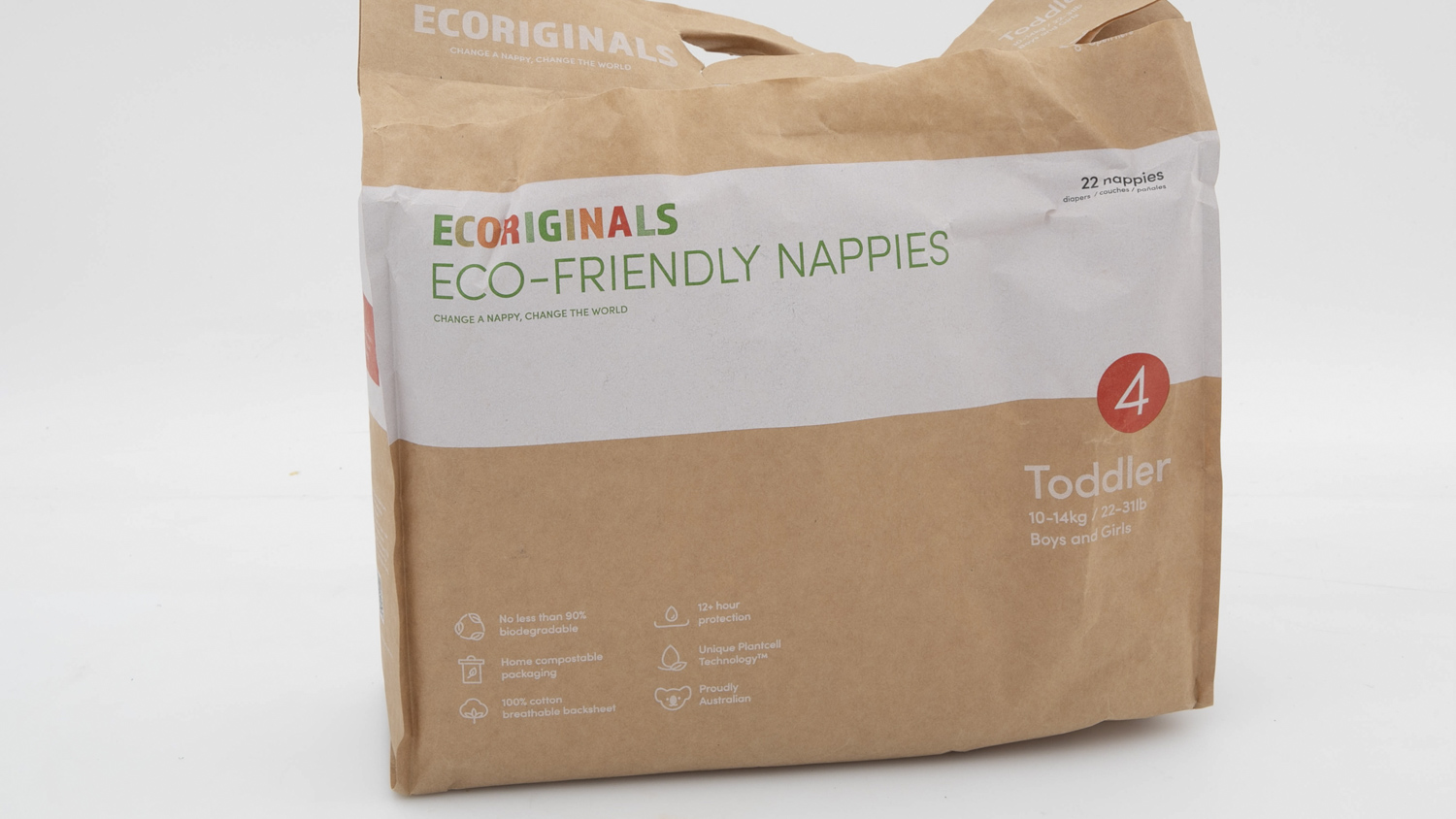
Ecoriginals Eco-friendly Nappies Infant Size 2 / Toddler Size 4 / Walker Size 5
- CHOICE Expert Rating: 82% / 78% / 76%
- Price: 63c / 91c / $1.00 per nappy
- Eco claims: No less than 90% biodegradable; Home compostable packaging; Sustainably and ethically sourced materials; “Certified Plastic Neutral”; Sustainably-sourced wood pulp; Non-GMO cornstarch; More than 90% biodegradable; Biodegradable paper packaging printed with food-safe inks.
Read the full Ecoriginals Infant Size 2 nappies review.
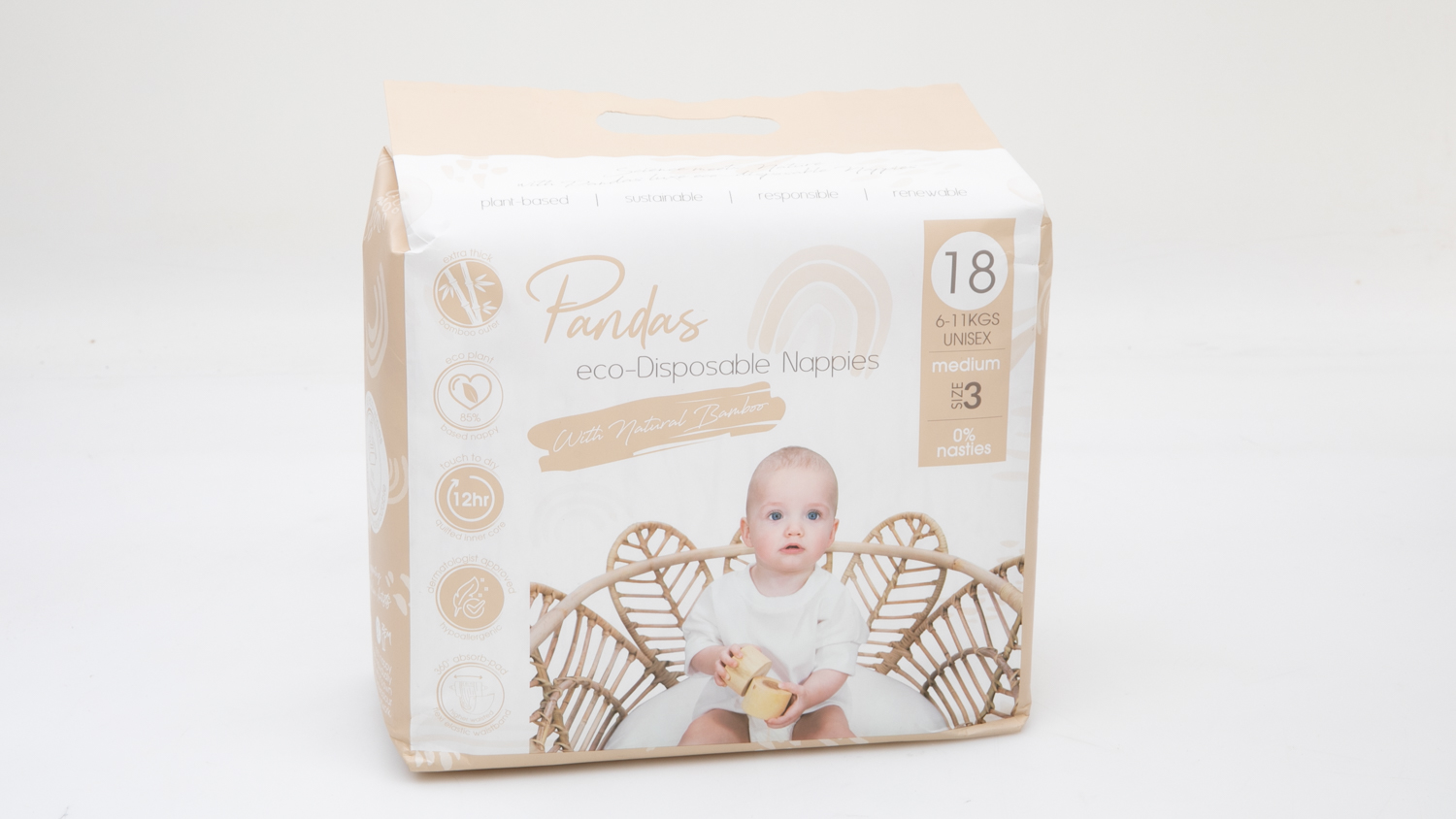
Pandas Eco-disposable Nappies Medium Size 3 / Small Size 2 / Newborn Size 1
- CHOICE Expert Rating: 76% / 74% / 70%
- Price: $1.11 / $1.00 / 91c per nappy
- Eco claims: Made from 85% biodegradable plant-based materials; Take only 45 days to biodegrade; Back sheet is plastic-free and 100% biodegradable; Free from pesticides, GMO, harsh chemicals; Responsible forestry used for plant-based pulp; Compostable packaging
Read the full Pandas Eco-disposable Nappies review.

DIY baby wipes
If you’re trying to reduce your overall nappy-related environmental footprint, changing the way you use nappy wipes is the next step.
Making your own baby wipes will reduce the amount of plastic packaging you create, and give you control over exactly what they’re made of. They’re also much cheaper than store-bought baby wipes, and as long as you have a stash of paper towels at home, you’ll always be able to whip up a batch if you run out.
If you’re trying to reduce your overall nappy-related environmental footprint, changing the way you use nappy wipes is the next step
When I used these I found they worked well – even on particularly messy nappy situations. But make sure you use good-quality paper towels. (Believe me, I tried to use cheap ones and instantly regretted it.)
Here’s a basic recipe to get you started.
Homemade baby wipes
Ingredients:
- 1 roll paper towel
- Plastic container with a lid (I used an Ikea one)
- 2 cups hot water
- 1 teaspoon liquid soap.
Method:
1. Cut the roll of paper towel in half using a serrated knife.
2. Put the paper towel in the container, with the cardboard tube standing upright.
3. Mix the hot water with the liquid soap.
4. Pour the mixture evenly over the paper towel.
5. Wait until the paper towel has absorbed most of the liquid, then turn the paper towel roll up the other way so that the paper towel is wet all the way through.
6. Remove the cardboard tube from the paper towel roll. (Don’t forget to recycle or compost it!)
7. Pull the wipes from the centre of the roll to use.
Notes:
- You may need more or less water depending on how thick your paper towel is.
- Please don’t flush these wipes – they’ll block your pipes!
- You can tweak the recipe by adding other ingredients, such as aloe vera gel, witch hazel extract, oils such as olive, coconut or sweet almond, vitamin E, herbal tea such as chamomile, etc.
- If you’re heading out of the house, you can pop some of these wipes in a smaller plastic container or reusable plastic bag.


